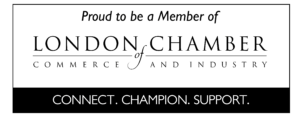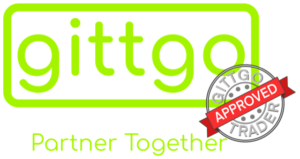Standing out from the crowd: some basic tips
How do you get yourself or your company noticed?
Most market places are over-saturated and your customers have multiple options of who to give their custom to. Why should they pick you? Why should they even notice you exist?
It’s a question that faces us all, so what can you do to stand out from the crowd and make yourself both seen and heard, within the constant barrage of messages we are all bombarded with every day.
Here are a few simple starter tips:
Always speak to your target audience’s main pain points
You can be pretty sure that the majority of customers don’t care about you, your profit margins, your brand, your products, or anything much about your business. What they do care about is how you can help them. How will working with you make their life easier and better?
They want to know why they should buy your product – and best way to show how you can benefit them is to understand their pain points and speak to those particular situations with clarity.
Example:
I’ve been a life-long insomniac. I’ve had lots of people try to sell various cures. White-noice machines, sensory deprivation tank sessions, black-out blinds, sleeping pills, sleep clinics, electromagnetic interference, aromatherapy, acupuncture, diet – the list is endless.
Some focus on the cause, some on the cure? But any that have ever caught even a few minutes of my attention have shown that they understand the impact of long-term insomnia. Referencing both the immediate and future issues that can be associated with sleep deprivation. They spoke about the problems – mental and physical that are associated with insomnia:
Chronic fatigue, Depression, High blood pressure, Diabetes, Heart attack, heart failure, or stroke. Tendency to obesity, Immunity suppression, Impact on memory, even reduced libido. These are pain points that have a huge impact on the individual and showing they understand the impact means I’m likely to at least hear them out.
They are connecting because the conversation is not primarily about them. By speaking to pain points first you build trust, they know you understand and can then move to why that customer needs what you deliver.
There is a good structure to use to do this:
First, explore the pain point and prove you understand the issue
- Show you understand the root causes of their pain
- Show you appreciate how they suffer because of it?
- Explain why they need your solution.
There will likely be others who offer something very similar but if you have a clearly defined reason why you do what you do and how your methodology is unique to you – then you will find traction with your target audience.
Not everyone will respond, and that’s both expected and normal, but those who do align with your values and methods will be attracted to work with you … and will value what you deliver for them. Which is foundational to building a loyal customer base.
Invest in your identity
Everyone who has been in business for more than 2 minutes will have heard the terms USP (Unique Selling Proposition) and POD (point of difference). Perhaps even your UPB (unique perceived benefit).
They are all just jargon and different ways of referencing the same simple thing:
What makes you stand out from the crowd?
What these three letter terms all refer to is market differentiation – and it’s the same challenge facing any business in a crowded marketplace.
So how do you find and define your differentiators?
A unique selling proposition is anything you do that makes your brand different from your competition. For example, it could be: your route to market and your placement strategy – your sales platform or your methods of distribution.
Amazon started as an online book sales service, when most book retailers were stuck in a brick and mortar world Amazon reimagined that world. Your USP could be the product’s functionality (how it works, feels, looks), your pricing, your marketing strategies, or exemplary customer service. Whatever it is, it should be something that is difficult for your competitors to replicate – and when used correctly, it should ensure customers choose you over your competition.
Why you need market differentiation?
With new businesses popping up every day offering products similar to yours, it is only the brands that stand-out that get noticed. The first rule of doing business is capturing your customer’s attention. After all, without their attention you can’t win their business!
Differentiation is the key. It’s the positive ways your brand, products or services differ from your competitors, communicated as succinctly as possible, to your potential customers. (I can’t cover everything in every post so I’m assuming here that you have done the appropriate work to know who your potential customers are and how best to communicate with them! This post is about how to get that customer to narrow their attention to your business!)
The term POD (points of difference) is used to describe those things.
Example:
Perhaps a sleep therapist has combined a black-out sleep mask, with earbuds and an app that means the wearer can play white noise (or relaxation aids of their choice), and the mask also has a cooling fan to help lower the user’s brain temperature to the optimum level for sleep. That’s something unique they can offer. Each element may be available elsewhere but the combination makes for a unique offer.
Whatever your individual PODS are, a clear connection has to be built in the mind of your potential customer that you are the go-to-team to deliver those benefits for them.
You are looking to create an instantly and positive association in their mind between the service they need and your brand – without any potential confusion with a competitor.
Example:
There is a well-used test in the advertising world to test an advert is on brand. The test is simple. You just blank out the logos and names on the concept ad artwork. If the ad still works and by the very look, typefaces, colours, style etc the ad can be identified as coming from a particular company – then it is effectively conveying the brand. But if by replacing the logo with a competitors means you could just as easily sell the ad to that competitor without anything feeling odd, then the ad goes back to the creative team to rework it. It os not ‘on-brand’ and distinctive enough to pass the test.
How to find your POD?
There are different techniques to discover your PODs – or indeed, any gaps in the general market that you could move to fill by developing a specific POD.
We advise that it all starts with market analysis. Understanding the competitive landscape and your competitor’s strengths and weaknesses is crucial. Then identify any elements that differentiate your product from theirs and maximise those differences. But How? I hear you ask:
It’s always a good idea, and a great place to start, to ask your present customers why they chose you? Why they come back? What they most value about what you do for them? etc.
You just might find that there is a clear POD to your offering that you thought was just what everyone did? You’d be surprised how often that is the precisely the case we find when working with new clients and undertaking doing market research on their behalf. What you may consider ‘good practice’ your customer might think is exceptional. Always talk to your customers.
Once you have identified the things that make you different then it’s time to use them in your marketing efforts as your USP. This ensures you are communicating the things that make you unique, and that matter to your customers, so that they help you stand out and command the attention of any potential new customers.
How branding helps you share your USP
Steve Forbes, the editor of Forbes business magazine said “Your brand is the single most important investment you can make in your business”.
Did you know that less than 10% of eCommerce businesses account for 90% of annual sales globally?
Why are those 10% successful? Because they have positioned themselves as the names that people instantly think of when they want to buy a particular product online.
How do they do that? It is all about consistent, repeated brand positioning and messaging. Backed-up by service delivery which aligns the brand promises made to the customer.
If Amazon didn’t deliver your goods on time or the build quality was poor and items quickly broke, then the service wouldn’t match the promise… and you wouldn’t place another order with them.
A great brand can’t fix a broken business model. If all the brand touchpoints and promises align throughout the customer experience – from initial contact to service/product delivery and into aftersales care, then the customer will have a favourable emotional reaction to the brand. They are likely to return as a customer and to refer others too.
I have a quote I love to use that explains this. Maya Angelou, the famous author and activist, said “People will forget what you said, they will forget what you did, but they will never forget how you made them feel”. Although she was talking about being a decent human being, that quote sums up branding in a nutshell.
Think about it. Most people can name a relative, family friend or teacher who was important to them growing up. Someone who gave them time, instilled confidence, helped them to grow and to become ‘them’. I know I had several people at different times in my life who played that role in helping me figure out who I was and what sort of person I wanted to be.
I can’t recall many actual conversations. I rarely recall their specific actions. But I do know that they made me feel secure. They created a safe-place to explore and discuss things – and know these encounters left an impact on me. I have warm feelings towards those people. Sure, we had disagreements at times. They didn’t always do what I thought they should (and visa-versa I’m sure), but the overwhelming connection and positive feelings remain. And one of the key factors to that is that they were there. They showed up – and they were consistent when they showed up. By that I mean, I knew what I was going to get. They didn’t behave irrationally, nor pander to my whims either. This is true of brands too.
It’s well documented that consumers need to have at least 6-7 contacts with a brand before fully register it? Other research has suggested that people need 7-8 contacts with a brand before they will consider doing business with the company. So showing up and being consistent is just the start of the process.
Showing up and then getting noticed are two primary pillars of effective brand building.
Once noticed, people become familiar; familiarity instils trust, and trust translates to sales.
There is another well-worn business adage. To do business with you, people need to know, like and trust you. That’s one of the core tenets of a good brand strategy.
In the very simplest terms… ‘Know’ means both to see you and recognise you. ‘Like’ means they think they could do business with you. ‘Trust’ means to believe you deliver a credible service… for most people, that means some validated social proof.
Once they buy, and you deliver on your promises, then that Know, Like and Trust is cemented. You have a happy customer. Once repeat a few times that happy customer can quickly become a loyal fan. Loyal fans are happy to speak about you and bring referral business. Which is good news for any company. Sounds simple, right!
The decision process
As touched on earlier – we all make buying decisions based on emotions. It happens mainly in the limbic system which is the seat of our emotional brain.
To build a business band that engages that section of our brains properly involves a number of components.
Logo design (and your wider visual identity)
Many people talk about the logo as the brand. I understand why the two get confused, but nothing is further from the truth.
A logo is a brand mark. A badge that represents the company. An effective brand strategy will ensure that your logo is imbibed with all the meaning and values that the company has decided it wishes to communicate to its audience.
This goes beyond the mere design of the logo itself. The brand strategy, the business model and delivery, and the rest of the communication and identity system employed by the company – everything has to fully align. Everything has to underpin the logo – which essentially acts as the face of the brand.
As such, a logo carries a lot of weight on its shoulders. It plays a crucially role in your branding strategy. When designed correctly, your logo can instantly capture the target
attention. It can connect with and engage emotions, and play a significant role in creating a recongised brand that can be trusted. Remember we are trying to get to know, like and trust! So, the know part starts with a recognisable logo.
Your logo is key to the recognition and recall of your brand. ‘Like’ then comes from connecting with the target audience and presenting yourself authentically – and ‘trust’ is built by honest interactions and consistently delivering on your promises.
Use transparency to your advantage
A highly powerful strategy for getting noticed in any crowded market is transparency. Consumers don’t trust businesses that are inauthentic, nor brands that aren’t transparent.
In our world where fact-checking can be done in seconds, authenticity and transparency are key. And they are only becoming more important with each new generation of consumers. An Accenture Strategy survey showed “66% of consumers think transparency is one of the most attractive qualities in a brand”.
94% of Millennials say they want to make a difference in the world through their work and they expect brands to feel the same.
Brands need to be open, to stand for something beyond profits and to ‘show their working’ as it were, to keep the younger generations on side.
What are the type of things people are looking for transparency on:
- How do you treat your employees?
- Where do you source your materials?
- Do you have a vision or purpose beyond simply making a profit?
- Do you support a cause? Do you donate a percentage of your profits to a charity or local organisation?
- Do you have an eco-friendly policy and use eco products?
But what if you don’t have a cause?
Firstly, don’t be false. Authenticity is foundational in the trust relationship after all.
But if you do choose to support a cause and use it to promote your business, be sincere. Determine a cause that will resonate with, and will help establish a stronger emotional connection with, your customers.
It doesn’t need to be a huge global issue. You may choose to support a local school or education programmes. Or maybe provide meals for children who need them. The cause just needs to be something you care about and that will resonate with your customers.
It’s a fantastic opportunity to show your brand’s personality, your humanity, and show that you care about something that is important to you and to them.
Consumers love brands with a bigger ‘reason for being’. But never take that connection for granted and don’t waste it. It has to be worked at, and you have to truly believe in the cause or they will quickly see it as a fake promotional tool.
Times have changed, so it’s ok to be vocal about social issues. If you are supporting a popular good cause, then you don’t need to be overly shy about it. Tell consumers what you are doing and why it matters. Maybe put a link on your website, and mention it on your social media occasionally. Maybe even sponsor events that align with the cause.
According to an Edelman survey, two-thirds (64 percent) of consumers around the world said that they would buy from a brand (or conversely boycott it) solely because of its “position on a social or political issue”. So, think long and hard about supporting a contentious issue that could divide your target market.
Your goal is to make your brand shine – not alienate yourself from a large percentage of your audience. But if you feel strongly enough about it then those that agree with you will only feel more inclined to give you their business and a smaller, dedicated client base has been proven to be a very effective business model. It’s the reason people niche after all.
Encourage customer referrals
‘Word of Mouth’ (or referral marketing) is probably the most powerful tool available for any brand to promote their products or services. (It is the reason why S2 use lots of customer quotes on our social media). Real customers’ words, about their genuine experience of the service, processes and outcomes of the work we deliver are going to be more impactive on potential customers than any marketing spiel.
Customers words are helpful for anyone considering making a purchase as they help them understand what you do, how you do it and the difference it makes.
Some people are scared to ask for a referral. And that’s understandable BUT we don’t ask for them. We DO ask for our clients reflections on our work and the process we followed at the end of a project. We ask them to help us understand what we did well and where they felt we could improve on what we did too. We ask them to critique with honest feedback – good or bad. We tell them we will use their thoughts to improve. We are always trying to improve what we do and how we deliver our service to stay ahead of our competition so it’s a valuable thing to do. Honest feedback is the key. If they say nice things about us in that feedback then we ask if we can use their words. Then we might ask if there is anyone they know who they think could benefit from our service – and if so could they introduce us. Done like this, it’s pretty simple and straight-forward.
If customers like what you have done for them then they are usually very happy to make a referral. The big advantage is that it’s not a sales pitch from your company. You don’t even have to sell at all – your customers do it for you!
According to Review 42.com:
- “92% of consumers trust recommendations from friends”.
- “Word of Mouth brings in 5 times more sales than paid media”.
- “74% of consumers identify word of mouth as a critical influencer in their purchasing decision”.
Customer referrals (when done right) help you create a buzz about your brand and stand out from the crowd. Referral marketing can also be done at some scale, if you employ the right tools and techniques.
Example: At my company S2 design we spent our first 19 years trading without a website. We did some networking events but the overwhelming majority of our new clients came from referrals. The vast majority of our work came from repeat clients. Which tells me our brand positioning and values aligned correctly with our service delivery. Clients liked what we did for them, they came back for more – and they were happy to also introduce us to their contacts whom they felt we might be able to help.
Be Your Brand
In our modern world, anyone can start a business from anywhere. Just source products, launch a website, and create social media accounts. Maybe they will leverage the strategies you’ve found in this post (and other resourses online) to short-cut getting their first building blocks in place. Anyone can do it … but statistically most will fail.
In the UK, according to research by Fundsquire (the global start-up funding network):
20% of small businesses fail in their first year.
60% of small businesses fail within the first three years.
It’s not just small business. A study by McKinsey found that the average life-span of companies listed in Standard & Poor’s 500, in 1958, was 61 years. Today, it is less than 18 years. McKinsey believes that, in 2027, 75% of the companies currently quoted on the S&P 500 will have disappeared.
CS investing commenting on the Fortune 500 stated that “Half a century ago, the life expectancy of a firm in the Fortune 500 was around 75 years. Now it’s less than 15 and declining”.
Building a business is not easy, but building a brand is the bedrock of any modern business. Using the strategies in this post will help your brands essence shine through. Promoting your ‘why’: The reason that drove you to start the company, that gets you out of bed everyday and fulfils you.
Make your customers feel that they’re more than just another sale. Make them part of the conversation. Encourage your customers to share their experiences to create a loyal community that openly supports you, just as you support them.
There may well be others who offer something very similar – but if you have a clearly defined reason ‘why’, clearly explain what you do and how your methods and service are unique to you, then you will find traction with your target audience.
Not everyone will respond, but those that align with your values and methods will be attracted to work with you and will value what you deliver for them. Which is foundational to building a loyal customer base.
I hope this article has given you some ideas but if you are not sure where to start or simply don’t feel you have the time to think it all through, then I recommend you talk to a brand professional. There are some really good ones out there – and they will all have slight differences of how they do what they do – as you’d expect!
If you are going to talk to someone then make sure it’s someone you can be honest with. Branding a business means understanding that business – knowing the positives and the negatives. If you don’t feel you can share those intimate business details with someone else, then go back to the top and re-read this post figuring out what action you can take yourself. Look at some other articles and resources online. Doing something is generally better than doing nothing – even if it fails, at least you will have learnt what not to do next time.
And that brings me to the final thing I’d like to say. Your brand is never ‘done’. The market is constantly changing and evolving. The world we live in alters at an incredible rate. What worked today might not be as effective in three months – or even three weeks. You have to monitor, evaluate and iterate to build an effective brand. It’s a constant feedback loop. Those who stand still and are not agile enough to adapt tend to get left behind. Stay informed, stay true to who you are, and stay close to your customers.
I close with a quote from the Howard Schultz book about the global Starbuck brand, ‘Pour your heart into it: How Starbucks built a company one cup at a time.’
“Authentic brands don’t emerge from marketing cubicles … They emanate from everything the company does”.








Leave a Reply
Want to join the discussion?Feel free to contribute!